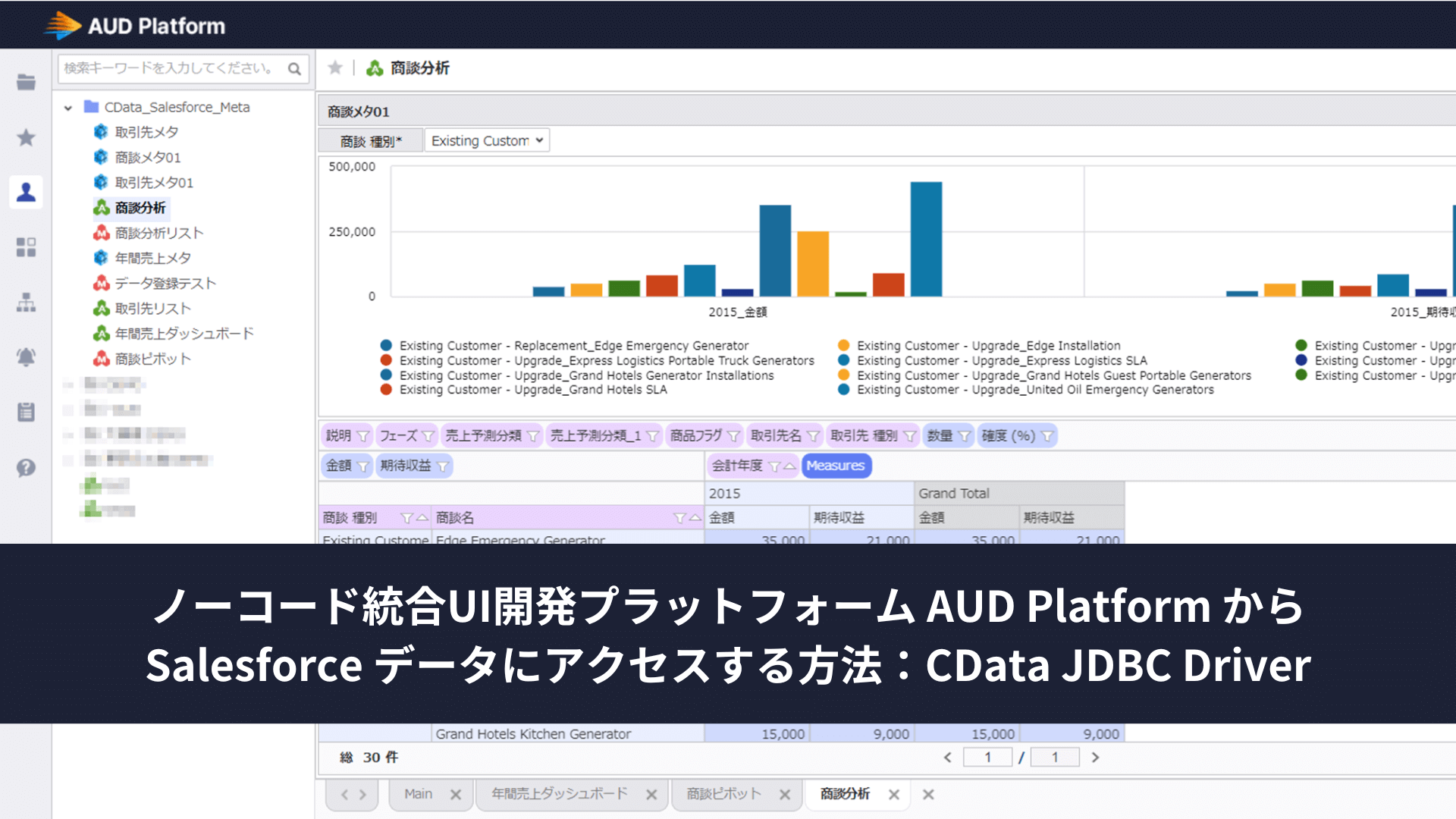ノーコードでクラウド上のデータとの連携を実現。
詳細はこちら →CData Software Japan - ナレッジベース
Latest Articles
- MySQL のデータをノーコードでREST API として公開する方法:CData API Server
- CData Sync AMI をAmazon Web Services(AWS)で起動
- Connect Cloud Guide: Derived Views, Saved Queries, and Custom Reports
- Connect Cloud Guide: SSO (Single Sign-On) and User-Defined Credentials
- Connect Cloud クイックスタート
- Shopify APIのバージョンアップに伴う弊社製品の対応について
Latest KB Entries
- DBAmp: Serial Number Expiration Date Shows 1999 or Expired
- CData Drivers のライセンスについて
- Spring4Shell に関する概要
- Update Required: HubSpot Connectivity
- CData Sync で差分更新を設定
- Apache Log4j2 Overview
ODBC Drivers
- [ article ] SAP BusinessObjects BI データにSQL Server ...
- [ article ] Magic xpi からCData Software ODBC Driver ...
- [ article ] RPA ツールPower Automate Desktop からExcel Online ...
- [ article ] Visio のシェイプとMarkLogic データを連携
JDBC Drivers
- [ article ] ColdFusion でeBay データに連携する方法
- [ article ] RazorSQL からAzure Synapse データに連携。
- [ article ] Google Cloud Data Fusion でSFTP データを扱う方法:CData JDBC ...
- [ article ] Active Directory データをDataiku DSS ...
SSIS Components
- [ article ] SSIS を使ってOracle データをSQL Server にインポート
- [ article ] WooCommerce をSSIS 経由でSQL サーバーにバックアップする
- [ article ] SSIS を使ってPCA Sales データをSQL Server にインポート
- [ article ] SSIS を使ってDynamics 365 データをSQL Server にインポート
ADO.NET Providers
- [ article ] SSAS でHBase データに連携するOLAP Cube を作成
- [ article ] SSIS を使ってAct-On データをSQL Server にインポート
- [ article ] SSAS でQuickBooks Online データに連携するOLAP Cube を作成
- [ article ] Infragistics XamDataGrid を使用してSplunk ...
Excel Add-Ins
- [ article ] SharePoint Excel Services からCData ODBC Driver for ...
- [ article ] StiLL からCData Software ODBC Driver を使ってActive ...
- [ article ] DBArtisan でSharePoint Excel Services データに連携
- [ article ] Excel を使ってOracle SCM にデータを追加したり、Oracle SCM ...
API Server
- [ article ] Java のOData データエンティティを使用したObject-Relational ...
- [ article ] API Server をAzure でホストする方法
- [ article ] OData データのAzure SQL への自動レプリケーション。
- [ article ] OData データに連携しTalend からデータに接続
Data Sync
- [ article ] MarkLogic データからSQL Server ...
- [ article ] MongoDB へのAvalara AvaTax データのETL/ELT ...
- [ article ] Google Cloud SQL へのau PAY Market データのETL/ELT ...
- [ article ] 複数Bugzilla アカウントをレプリケーション
Windows PowerShell
- [ article ] Bing Ads データをPowerShell script でSQL Server ...
- [ article ] PowerShell を使ってIBM Informix データをSQL Server ...
- [ article ] PowerShell からPCA Sales データに接続してデータの更新・挿入・削除を実行する方法
- [ article ] SAP Hybris C4C データをPowerShell でMySQL にレプリケーションする方法
FireDAC Components
- [ article ] Delphi のSAP BusinessObjects BI データへのデータバインドコントロール
- [ article ] Delphi のIBM Cloud Data Engine データへのデータバインドコントロール
- [ article ] Delphi のWooCommerce データへのデータバインドコントロール
- [ article ] Delphi のYahoo! JAPAN DATA SOLUTION ...






